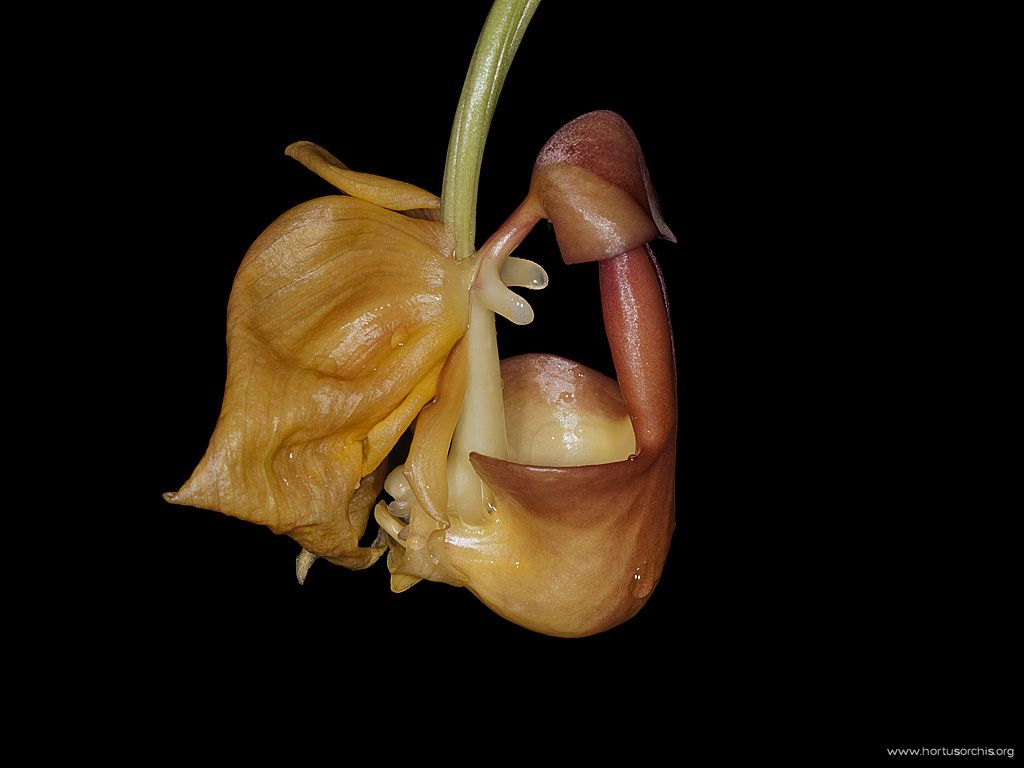| |
| taxonomy |
described by |
(Hooker) Hooker, William Jackson |
|
published in |
Botanical Magazine 58 : sub. t . 3102 1831 |
| |
|
|
| |
family |
Orchidaceae |
| |
subfamily |
Epidendroideae |
| |
tribe |
Cymbidieae |
| |
subtribe |
Stanhopeinae |
| |
genus |
Coryanthes Hooker 1831 |
| |
|
|
| |
metabolism |
CAM pathway, stomata of the leaves are open at night. |
| |
|
(K.Silvera, L.S. Santiago, J.C. Cushman, K. Winter - International Symposium on Plant Biology, August 2013) |
| |
|
it is useful give the soluble mineal nutriens, on the roots. |
| |
|
|
| native of |
origins |
Caribbean, Mexico, Belize (Cajo, Stann Creek) Guatemala (Alta Verapaz, Izabal), Honduras,
|
| |
|
Nicaragua (Laguna de Perlas, Zelaya), Costa Rica (Puriscal, San Josè), Panama (Canal Area),
|
| |
|
Suriname, Guyana, Trinidad & Tobago, Venezuela (Amazonas, Bolivar, Delta Amacuro), |
| |
|
Colombia, Brazil (Pernambuco) |
| |
|
often found in conjunction with ants nest (acidity ph 3) |
| |
altitude |
0 - 1000 m (0 - 3300 ft) |
| |
habitat |
climate informations from Paramaribo (Paramaribo, Suriname) |
| |
|
Köppen climate classification : Af, humid tropical climate of the rainforest |
| |
|
(no winter season, more abundant rainfall) |
| |
|
the weather station data (temperatures are calculated for an altitude of 500 m / 1650 ft) : |
| |
|
 |
| |
photoperiod |
in Paramaribo this orchid bloom with a photoperiod, that varies during the year, from 12 h 21 m' to 11 h 39 m' |
| |
life form |
epiphyte |
| |
brightness |
partial shade |
| |
|
|
| inflorescence |
length |
30 - 34 cm (12" - 13.6"), basal |
| |
nr flowers |
1, fragrant |
| |
size |
single flower 7 L 8 cm (2.8" L 3.2") |
| |
duration |
single flower, ≈ 5 days |
| |
time |
to bloom from birth, ≈ 30 days |
| |
|
|
| CITES |
appendix |
II |



